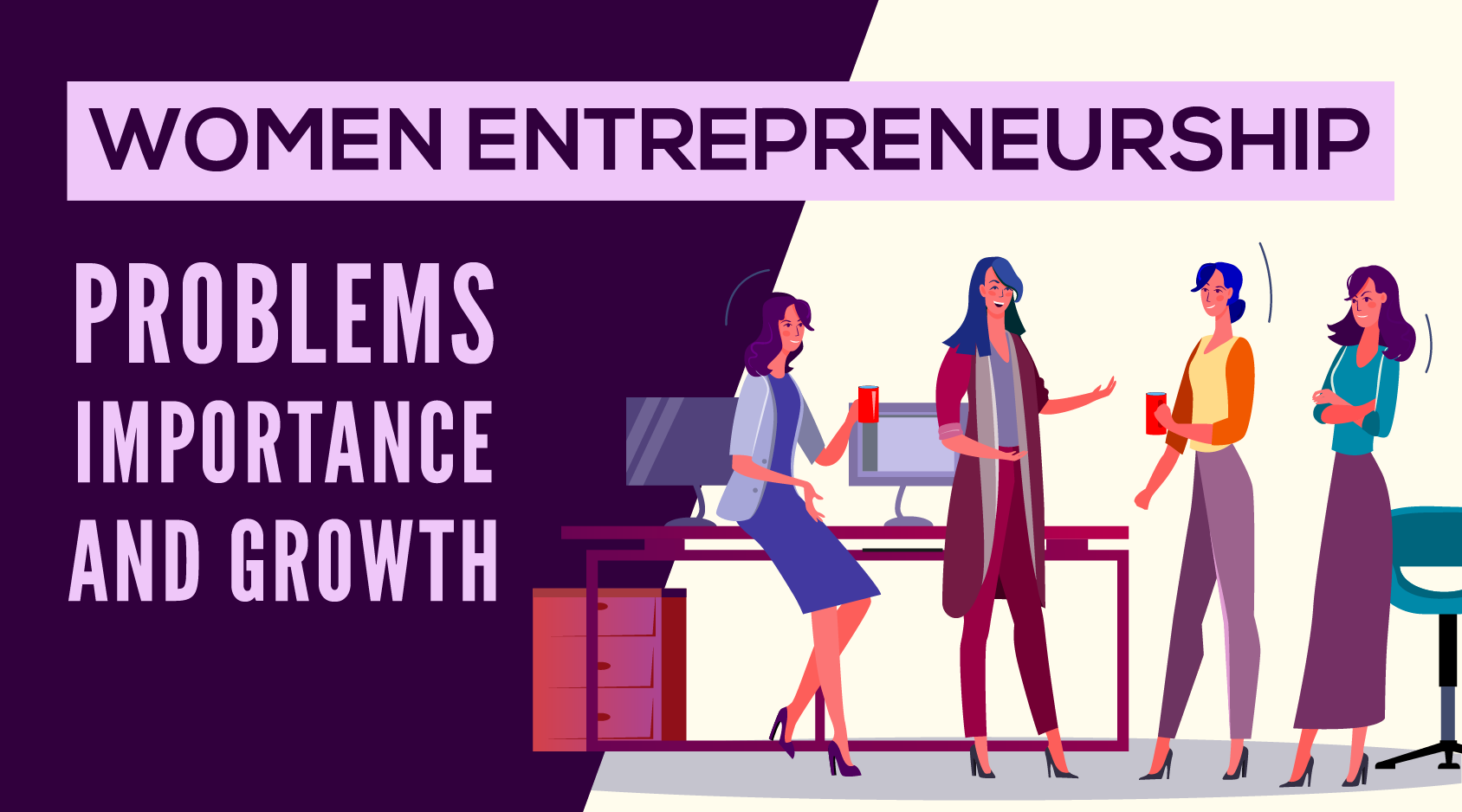In this new century, where digitalization and startups, run the whole world today, being an entrepreneur is no big thing. It was indeed a big agenda for people to talk about a few years back, but today it does not astonish the middle-aged people the same way as it used to. So what exactly is entrepreneurship? A person who uses his own creativity, designs, ideas, and money to start his own work/business can be referred to as an entrepreneur.

Entrepreneurship serves as a catalyst for the economic development of the country. It is one of the largest sections for capital accumulation. In fact, economic growth is the result of the efforts taken by entrepreneurs. Similarly, entrepreneurs can dictate economic growth through their actions and decisions. Now many have begun to realize that for achieving the goal of economic development, it is necessary to promote entrepreneurship both qualitatively and quantitatively in the country.
Only active and enthusiastic entrepreneurs fully explore the potentialities of the country’s available resources – labour, technology and capital. It took people some pretty years to digest this new idea of business. It became even difficult to digest the fact when women too thought of taking up entrepreneurship as a business. Whenever we support a women’s success, a pop-up of feminism gets tagged to ur identity. It’s beyond my understanding why men doing the same does not become a piece of a news article. No, women don’t believe in special treatment from society, they are just asking for equal treatment. If a man can take up start-up as a career without being much discussed in the public, then why are women given so much attention when they start working, especially after their marriage? why isn’t it seen as a regular task for women as well?
The government of India has defined women entrepreneur as “ an enterprise owned and controlled by women having a minimum financial interest of 51% of the capital and giving at least 51% of the employment generated in the enterprise to women”.
In most countries, regions, and sectors, the majority of business owner/managers are male (from 65% to 75%). However, there is increasing evidence that more and more women are becoming interested in small business ownership and/or actually starting up in business. In addition, rates of self-employment among women are increasing in several EU countries. Although there are no official statistics relating businesses to the gender of their owner/manager, there is a good deal of evidence to suggest a significant increase in female entrepreneurship.
According to the Women’s Financial Network, women start businesses at two times the rate of men. While women are starting more businesses than men, they find it harder at the outset to grow their businesses and access venture capital. Women entrepreneurs constitute 10 % of the number of entrepreneurs in our country. "All over the world, there is a realization that the best way to tackle poverty and enable the community to improve its quality of life is through the social mobilization of poor, especially women into self-help groups. Ever since independence, a number of innovative schemes have been launched for the upliftment of women in our country. The Indian government has taken a lot of initiatives to strengthen the institutional rural credit system and development programmes. Viewing it in the welfare programmes of the Ninth Five Year Plan (1997-2002) and shifting the concept of Development to Empowerment. The Indian government adopted the approach of Self Help Groups (SHGs) to uplift the rural poor women. The empowerment of women through Self Help Groups (SHGs) would lead to benefits not only to the individual woman and women groups but also the families and community as a whole through collective action for development. Most women business owners in Indian organization were either housewives or fresh graduates with no previous experience of running a business, These women business owners were in traditionally women-oriented business like garments, beauty care, and fashion designing, which either do not require any formalized training or are developed from a hobby or an interest in a business, The classic example will be of herbal queen Lady Shehnaz Hussain who started her herbal-based treatment from a relatively small scale. In fact, she started literally from her kitchen domain to a chain of beauty parlours spread out across the nation and world same can be said for Keya Seth.
Since the 21st century, the status of women in India has been changing as a result of growing industrialization and urbanization, spasmodic mobility and social legislation. Over the years, more and more women are going in for higher education, technical and professional education and their proportion in the workforce has also been increased. With the spread of education and awareness, women have shifted from the kitchen, handicrafts and traditional cottage industries to non-traditional higher levels of activities. Even the government has laid special emphasis on the need for conducting special entrepreneurial training programs for women to enable them to start their own ventures. Financial institutions and banks have also set up special cells to assist women entrepreneurs, this has boomerang the women entrepreneurs on the economic scene in the recent years although many women's entrepreneurship enterprises are still a much-neglected field. However, for women, there are several handicaps to enter into and manage business ownership due to the deeply embedded traditional mindset and stringent values of the Indian society.
Women have to play multiple roles :
- Sometimes she has to play the role of either wife or mother
- Or she has to adorn the role of parent or daughter
- Simultaneously in the social setting, she has to play the different roles in the community
- Playing these roles, women sometimes submerged their own self-rule and their own reality.
The constraints experienced by women entrepreneurs have resulted in restricting and inhibited the expansion of women entrepreneurship.
The majority of women business owners have had to rely to a significant extent on self-generated finance during the start-up period of their business. Bank loans and grants have only been used in a minority of cases and have usually been accompanied by some form of self-generated finance. The availability of bank credit appears to increase once businesses become established and/or a good relationship with the bank has been developed. Banks are reported to have been more forthcoming in the provision of loans once a business has begun to demonstrate a track record. Because of limited funds, they are not able to stock new materials and spend on advertising.
As women are accepting a subordinate status, as a result, they lack the confidence in their own capabilities, Even at home, family members do not have much faith in women possessing the abilities of decision-making. Due to primary household responsibilities towards her family, her time gets divided between the two worlds. She has restricted timings for work due to which, she is not in a position to travel frequently and be away for longer periods. Thus, her mobility is restricted. This also has an implication on business. A woman is dominated by men in her family as well as business. Often she has to obtain permission from men for almost everything. They are not treated as equals. Her freedom to spread her wings is restricted. She always has to consult and get the approval of men. A woman has to perform multiple roles be it familial or social irrespective of her career as a working woman or an entrepreneur. In our society, more importance is being given to a male child as compared to a female child. This mindset results in a lack of schooling and necessary training for women. As a result of these impediments the progress of women and handicap them in the world of work.
For Bollywood lovers, the film English Vinglish is the best example where her own family members were judgemental about her capability, be it in making Indian sweets for a wedding or speaking in fluent English. Her family itself was embarrassed to introduce her in public.
In most countries, regions, and sectors, the majority of business owner/managers are male (from 65% to 75%). However, there is increasing evidence that more and more women are becoming interested in small business ownership and/or actually starting up in business. Women are working in this multifaceted world. The organization scenario changes like a kaleidoscope with every responsibility, accountability and multiple pulls and pushes, which women have faced and came out with success. In addition, rates of self-employment among women are increasing in several countries. Although there are no official statistics relating businesses to the gender of their owner/manager, there is a good deal of evidence to suggest a significant increase in female entrepreneurship. One consequence of this is that women are a relatively new group of entrepreneurs compared with men, which means that they are more likely to run younger businesses. This, in turn, has some implications for the problems they face and their ability to deal with them.











